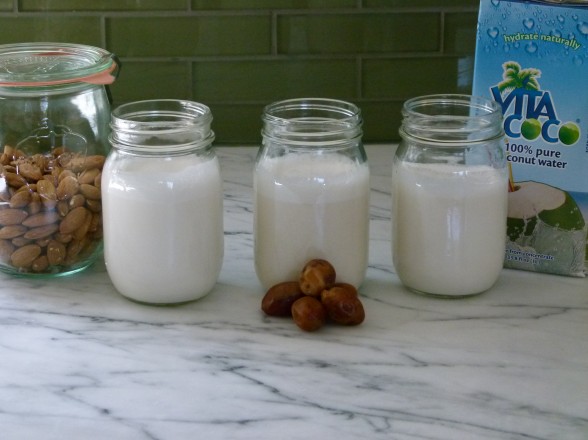
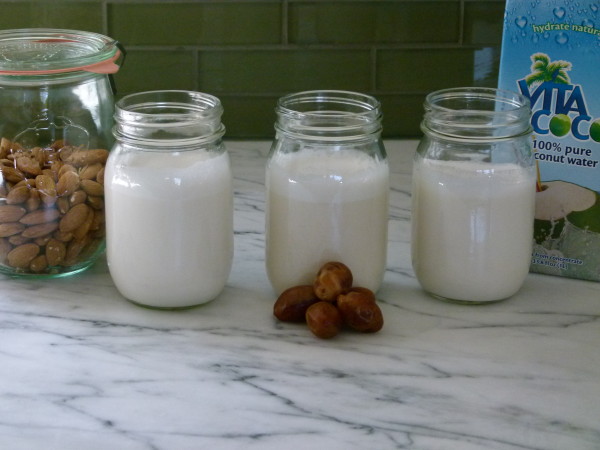
I know I’ve already posted a How-to-Make-Almond-Milk-from-Scratch recipe. In fact, I gave you three different versions! But my how-to involves slipping the skins off the soaked almonds before blitzing them in your blender which is really no big deal. The reason I do that is because I went to an ayurvedic cooking lecture many, many years ago and the teacher went into great detail about almonds. Almonds are wonderful and alkalizing and high in protein and good fats, BUT (I was hanging on the edge of my seat when I heard that “BUT”) they can be very hard to digest unless they are soaked. AND the skins can be a little bitter. AND the skins cause wrinkles. Whaaaaaat???? I will tell you no one was listening until she said that and then every manicured brow in the room went up. “Did she say almond skins cause WRINKLES?”
So obviously do you really think I was going to start eating almond skins after that? Silly question. Duh, noooooo. Of course I never did any research as to the validity of that statement and I still haven’t. But I did research how to make almond milk from other sources and everyone says to slip those skins off, perhaps due more to a bitter aftertaste than the wrinkles theory. But your friend Pamela here has gotten much busier since my last almond milk post and I have become practically dairy-free, so I have been making almond milk about twice a week. And there came a point when I decided that slipping those almond skins off was GIVING me wrinkles! Or maybe because I was doing it while watching Diners, Drive-Ins and Dives. Oy. Anyhoo, I decided to see what would happen if I soaked the almonds, drained them and blended them in fresh water WITH their supposedly bitter, age-advancing skins. Gasp. No difference. Same delicious taste and my skin still looks like it did before I drank the almond milk. Life-changing moment!
I also now exclusively use a nut milk bag (I know, sounds nasty, but totally fabulous!) instead of my ” target=”_blank” rel=”noopener noreferrer”>fine mesh sieve to squeeze out every last drop from the blended almonds. If you don’t have a nut milk bag (gives me the willies every time I type that, but a great product, really!), ” target=”_blank” rel=”noopener noreferrer”>a fine mesh sieve works great. You just really want to press down on the pureed almonds or squeeze them with your hands as I am convinced that the creamiest part of the almond milk comes from that last squeeze.
I use almond milk all the time, especially to finish off hot breakfast porridges like oats and millet. I use it in acai bowls and smoothies, as well as chia seed pudding and desserts. The girls have been using it over granola and my friend Matt pours it over cereal and in coffee. Just remember, homemade almond milk is pure goodness with no preservatives so it doesn’t last as long as the stuff in a box. What else do you use almond milk for?
Basic Almond Milk

Instructions
- Soak 1 cup raw almonds in bowl with plenty of room temperature water for 6-8 hours. (Soaking will make the almonds softer and more digestible.)
- Drain the almonds in a colander and rinse with fresh water.
- Place the almonds in a blender or Vitamix. Add 3 cups fresh water and blend until the nuts are pulverized.
- Strain through a fine mesh sieve, cheesecloth or a nut milk bag into a glass bowl. If using a sieve, use a spoon to scrape the almond meal around and allow as much liquid to drain through.
- Transfer to a glass jar and refrigerate, covered for up to 4 days. Add the remaining pulp, sweetened with honey or maple syrup, to hot cereal, granola or fruit.
Notes
Soak almonds in regular water, but use coconut water to blend with the soaked almonds. Almond milk sweetened with dates:
Follow directions for basic almond milk, but blend soaked almonds with water and 8 pitted dates. You can add a drop of vanilla and sea salt, if you like, but it is delicious just like this. Of course you can sweeten almond milk with stevia or honey or whatever you like, but I think dates are the best! You don’t need to sweeten the remaining pulp if you choose to eat it since it is already sweet from the dates.
 Like this recipe? Rate & comment below!
Like this recipe? Rate & comment below!
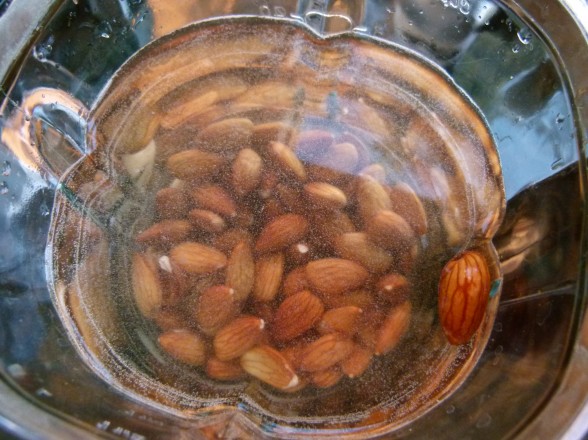
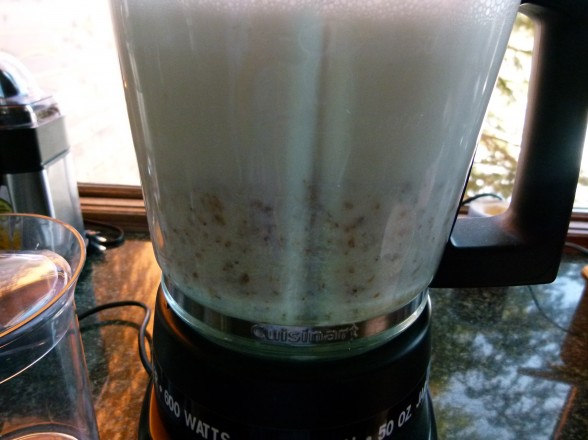
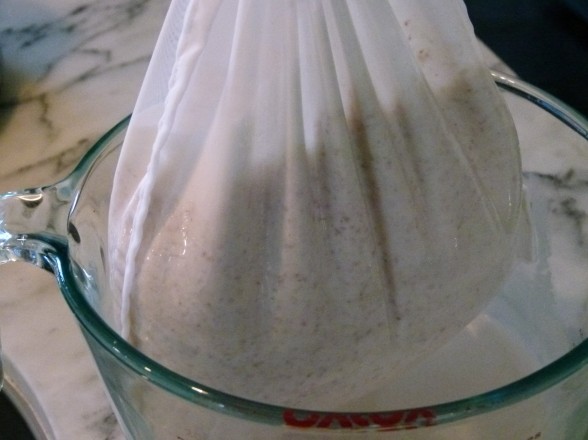
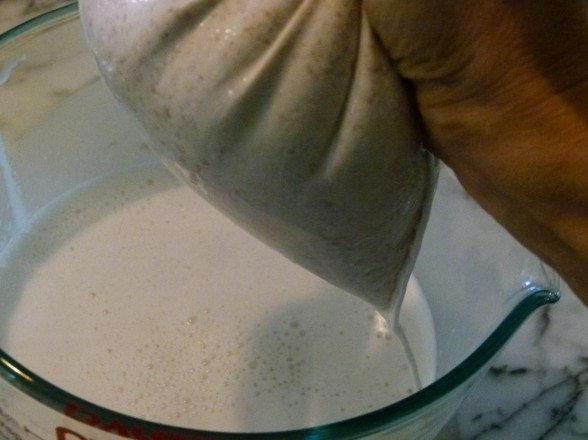
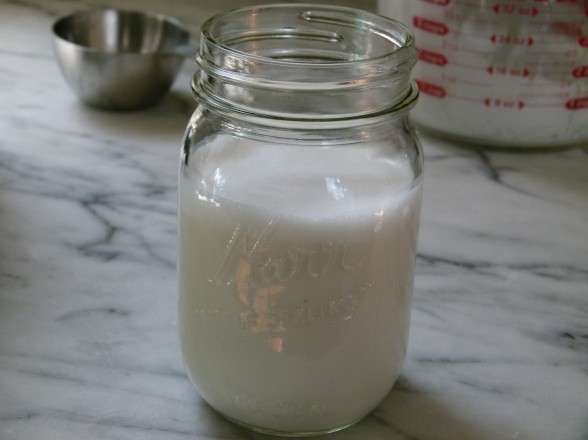
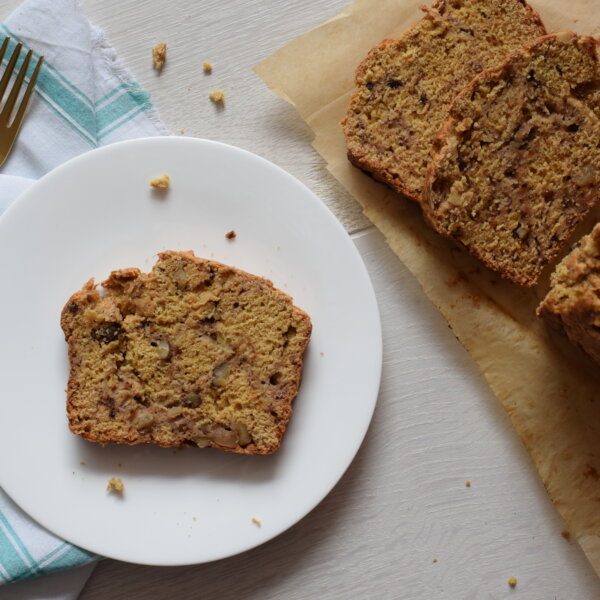
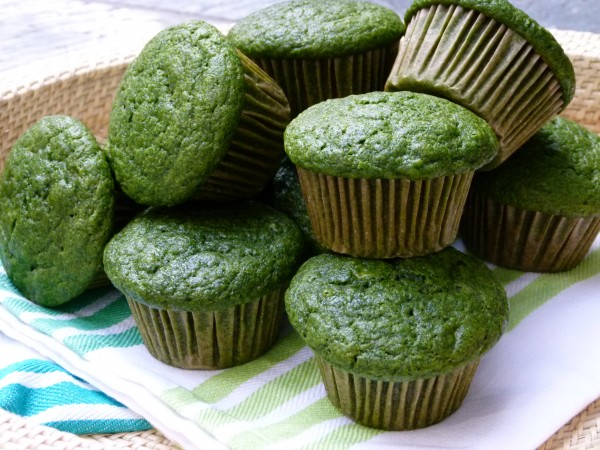
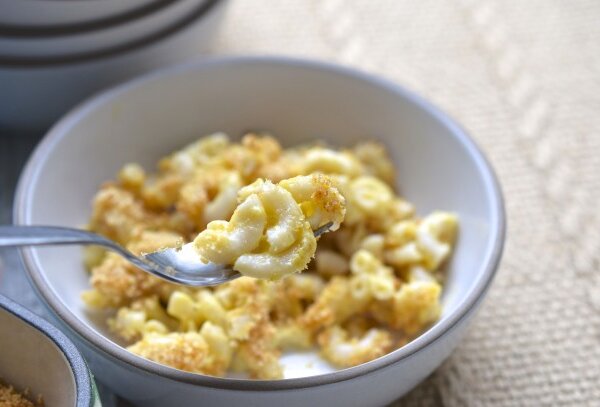
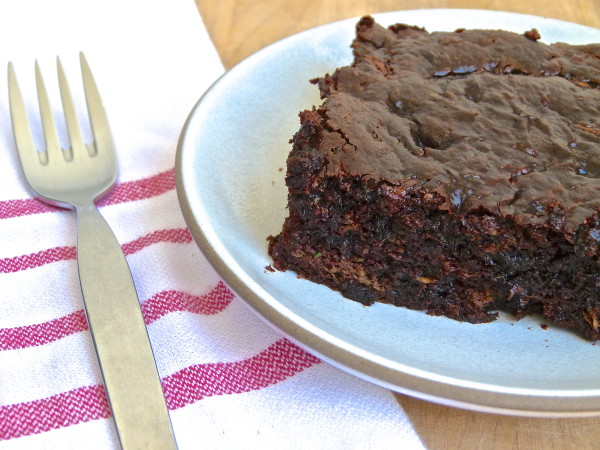





Can you freeze almond milk?
Now that’s a good question. I honestly don’t know. If I were in town right now, I would try an ice cube of it and let you know. I think I’ve read on the cartons not to freeze, but I can’t be sure. I’ll have to get back to you on that one!
I’m eager to try making my own almond milk now. I hate to waste anything, I was wondering about using the almonds that are left after squeezing out the juice to add to oatmeal or millet or other grains for a hot cereal or even to soups as a thickener. Seems like it would be a good taste and a good use,
You can definitely do all of those things! The almond pulp has a very neutral taste, although a little grainy. Adding it to hot porridge would be great or in a smoothie and I think it would be a great thickener for soups!
I have never tried to make almond milk – but I’ve been inspired and will try this week. I’m wondering – the vitamix blender and the ninja blender – aren’t they supposed to essentially juice anything that goes in them? Would there be any almond pulp to strain?
Go for it! You’ll never look back. The Vitamix doesn’t “juice” anything, though. It blends most things into a very fine texture, but the almond milk will be very grainy and pulpy. Take a sip and try it for yourself, maybe you’ll like it that way. Personally, I need to strain it in a nut milk bag. Let me know if you have any questions!
Hi Pamela! I love this recipe, I make it all the time and my family loves it too!
I do have two questions: Is it okay to soak the almonds for longer than 8 hours? Sometimes I put them in a bowl to soak, expecting to be back in 6-8hrs to make the milk, but life gets in the way and I can’t get to it till the next day?
Also, I heard you make a delicious breakfast with millet and almond milk…do you cook the millet in almond milk or do you add almond milk afterwards?
Thanks Pamela!
Now that’s a great question! You can soak longer than 8 hours for sure. Just change the water and refrigerate if necessary until you’re ready to use them. I cook a batch of millet twice a week just to have on hand. I cook 1 cup of millet with 2 1/2 cups of water and store it in the fridge. Then I reheat with almond milk and a little coconut milk until the millet is heated through and soft. I never measure the liquids since I eyeball it to what looks good to me (I like it kind of soupy.) You can cook the millet in almond milk and it would probably be creamier, but I’m not willing to part with that much homemade almond milk!
What is the shelf life of the almond milk?
4 days, 5 max. Not as long as boxed unfortunately.
What would the cost be to make 1/2. Gal of almond milk? Wouldn’t it be cheaper and time saving to just buy a 1/2 gal of non gmo almond milk?
Th cost would depend on what kind of almonds you’re getting. I buy truly raw, unpasteurized organic almonds which are about $8/pound, sometimes up to $10/pound. 1 pound of shelled almonds is about 3 cups which means you can get 3 quarts of almond milk. But for 2 quarts, it’s a little more than $5-6 + your time. Of course, homemade almond milk from soaked, raw almonds is not comparable to almond milk in a box which contains additives and isn’t a raw product. You can compare homemade almond milk to the kind you buy at a fresh juice bar and that usually costs about $6…a pint.
Almond milk lattes with honey and cinnamon are my absolute favorite. Looking forward to trying this!
Y-U-M! Did you see Amy’s comment about using homemade hazelnut milk in her coffee? Either way, homemade nut milks are the best!
I have been making hazle nut milk, using my nut bag. I’m telling you folks, if I can do it, then it is super easy. I use hazle nuts for two reasons. One- they make a great non-dairy coffee creamer. Slightly creamier than coconut or almonds. Secondly, almonds are high in salicylic acid and I am a bit sensitive to that. I never thought I would be dairy free due to my love of creamm in coffee, but hazle nut milk changed that!
Genius, Amy!!!! This is awesome. First of all, those non-dairy creamers are poison, so how great if your comment could get people to switch over to making their own homemade hazelnut milk. Second, I didn’t realize almonds caused an allergic reaction in many people, including one of the girls that assists me in my classes. She’ll be so psyched to learn about your suggestion. Thank you!
Have you ever tried blanching the raw almonds? I wonder if that would soften them up enough, like the quick soak method for beans, as well as loosen the skins.
It’s a good thought, Miriam, but I like keeping it raw for maximum nutrition. Soaking not only softens the nuts, but more importantly neutralizes the phytic acid and makes the nuts more digestible. Most of the phytic acid is in the skins, so I suppose if you’re removing the skins, it’s not a big deal. I guess if you need to make instant almond milk, it’s a good Plan B!
I used to peel the soaked almonds, but then for some reason thought heck I’d just blend it all, extra fiber? Whether it is or not, it just saves time not peeling. I also don’t strain after blending because I liked it as well as strained.
Exactly, Marty. The heck with it!